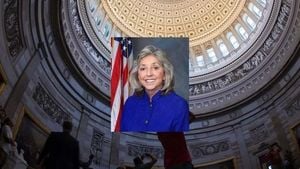In a sweeping series of actions, Pakistani authorities have intensified their scrutiny of both financial and security-related crimes, targeting tax evasion among the country’s affluent social media personalities and cracking down on the proliferation of illegal firearms in Punjab. These parallel efforts, revealed in official reports and statements as of October 20, 2025, underscore a growing determination by the government to address two of the nation’s most pressing threats: economic leakage through tax fraud and the deterioration of internal security due to illicit arms.
According to the Federal Board of Revenue (FBR), over 20 cases have come to light in which individuals with outwardly extravagant lifestyles—often broadcasted across social media—have declared minimal income and assets in their official tax returns. The FBR’s Lifestyle Monitoring Cell, a specialized unit tasked with cross-referencing public displays of wealth with tax filings, has identified a pattern: luxury cars, frequent international travel, and opulent living, all seemingly unsupported by reported earnings.
One particularly illustrative case involves a digital content creator and vlogger whose travel itinerary reads like a luxury travel brochure. As reported by the FBR and cited in Dawn, this individual embarked on globe-trotting adventures from 2020 through 2025, visiting destinations such as Seychelles, Dubai, the Philippines, Spain, the Netherlands, Turkey, the UK, the Maldives, Georgia, Saudi Arabia (multiple times), Croatia, Italy, Portugal, Hungary, France, Belgium (for the Tomorrowland music festival), Switzerland, Sweden, Denmark, Greece, Austria, and the Czech Republic. Despite this whirlwind of international excursions—often associated with significant expense—the vlogger’s tax returns told a much humbler story.
For instance, in 2020, the vlogger reported an income of just Rs. 490,800, with expenses of Rs. 390,000 and net assets totaling Rs. 1,090,800. Over subsequent years, the numbers crept up only modestly: Rs. 541,880 in income and Rs. 1,232,680 in net assets for 2021 (when pandemic restrictions limited travel), Rs. 564,040 and Rs. 1,387,720 for 2022, Rs. 784,600 and Rs. 1,672,320 for 2023, and Rs. 816,800 in income with Rs. 1,929,120 in net assets for 2024. The FBR maintains that this pattern reflects “substantial under-declaration of income,” as the lavish lifestyle on display is impossible to reconcile with the modest sums reported.
But the vlogger is far from alone. In another high-profile case, the FBR’s Lifestyle Monitoring Cell uncovered Rs. 180.5 million in hidden assets belonging to a member of a prominent political family from South Punjab. Public records and on-the-ground investigations revealed ownership of four luxury vehicles—a Lexus LX 570 flagship SUV (2019 model, valued at approximately Rs. 80 million), a Toyota Fortuner Legender (Rs. 15 million), a Suzuki Hayabusa superbike (2021, Rs. 5.5 million), and a BMW i7 electric luxury sedan (Rs. 80 million)—none of which appeared in the tax returns of either the individual or their father. The only vehicles disclosed in the 2023 filing were two high-end motorcycles, with a combined value of Rs. 31.28 million. By 2024, just one of those motorcycles remained on the books. The FBR’s investigators assert that “the taxpayer has declared mere fractions of their real assets and has not declared the sources of the money they used to acquire the concealed cars, showing manifest tax evasion.”
The third case identified by the FBR involves an even more staggering Rs. 624 million in hidden assets, with the taxpayer allegedly acquiring and using 19 vehicles over recent years, including a Chevrolet Corvette C8 Stingray (2020, Rs. 80 million), a Yamaha Raptor 700R ATV (Rs. 6.5 million), a Harley-Davidson Pan America adventure bike (Rs. 15 million), a Chevrolet Silverado (Rs. 40 million), and a fleet of Toyota pickups and SUVs valued from Rs. 4 million to Rs. 90 million. The collection also featured a Range Rover (Rs. 80 million), an Audi Q7 (Rs. 30 million), and a Mercedes-Benz sedan (Rs. 9 million). None of these luxury vehicles were reported in the taxpayer’s asset statements, according to the FBR.
While the details of these cases have been made public, the identities of the individuals involved remain confidential. The chief of the Lifestyle Monitoring Cell emphasized, “Proceedings are on against suspected tax evaders, but their identity cannot be made public according to income tax laws.” This confidentiality is required under Pakistani law, even as the public and media clamor for greater transparency and accountability.
These revelations have reignited debate in Pakistan over the role of social media in promoting unsustainable standards of wealth and the challenges authorities face in tracking digital-age financial flows. Some observers argue that the FBR’s crackdown is long overdue, noting that ostentatious displays of wealth have become commonplace among influencers, celebrities, and even public officials. Others, wary of potential government overreach, caution that privacy rights and due process must be carefully balanced against the need to enforce tax laws.
Meanwhile, in Punjab, a different kind of crackdown is underway—this one aimed at curbing the proliferation of illegal firearms, which authorities have declared a “major threat to internal security and peace.” As reported by The News International, the provincial government has ordered a comprehensive district-level action plan to halt the spread of illicit weapons. The Counter Crime Department (CCD) has been assigned primary responsibility for overseeing the operation, which is already in motion.
Officials have begun compiling lists of individuals and organizations suspected of involvement in the illegal arms trade. “Those who oppose peace and participate in the illegal arms trade will face severe consequences,” CCD authorities warned, signaling an uncompromising stance. The goal, they stressed, is to restore law and order throughout Punjab and to address what they describe as a “deterioration of internal security caused by illegal weapons.”
The crackdown reflects growing concern within the government that the unchecked spread of firearms is fueling violence, undermining public safety, and eroding trust in state institutions. Authorities have linked the presence of illegal guns to rising crime rates and have vowed to pursue both sellers and carriers of unlicensed weapons vigorously. The action plan, which includes district-level coordination and intelligence-led policing, marks one of the most ambitious efforts to date to rein in the arms trade within the province.
As these twin campaigns unfold, they reveal a Pakistan grappling with both the visible and invisible threats to its stability: the visible, in the form of luxury cars and international travel that belie modest tax returns; the invisible, in the form of unregistered firearms circulating in the shadows. Both, officials argue, demand a robust and coordinated response if the country is to move toward greater transparency, security, and rule of law.
For now, the FBR and CCD’s efforts stand as a stark reminder that, in an age of digital display and easy access to arms, the lines between public image and private reality—and between personal freedom and public responsibility—are under sharper scrutiny than ever before.




